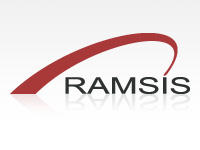Competitive advantage from enhanced productivity
Today, small and medium aerospace and defense suppliers face significant pressure to improve gross margins, revenues and market share. The number of companies competing for business is rising while original equipment manufacturers (OEMs) demand higher production rates while imposing just-in-time delivery of parts and systems requiring greater production flexibility from suppliers.
The Engineered to Fly industry solution experience based on the 3DEXPERIENCE platform allows small and medium suppliers to grow their business profitably. Enhanced business execution begins with knowledge capture of the end-to-end proposal process to ensure repeatability and reusability that allows companies to reduce the time spent on tactical proposal management. This frees companies to respond to more Requests for Quotes (RFQ) and Requests for Proposals (RFP) with improved accuracy on areas such as schedule and cost. In addition, digital continuity provided by the 3DEXPERIENCE platform reduces complexity in product development by integrating functions (e.g., sales, engineering, simulation, manufacturing and quality control). With digital continuityacross functions, or throughout the complete value stream, aerospace and defense suppliers can achieve higher margins through reduced design time; increased quality as issues are identified early, reduced number of duplicate parts, and optimized manufacturing.











